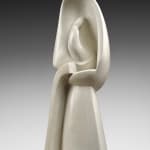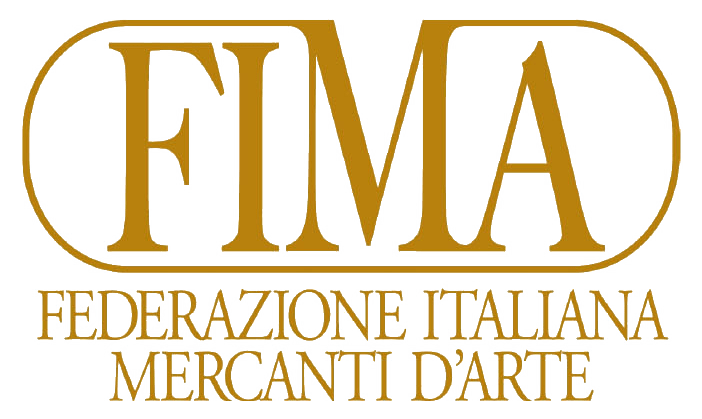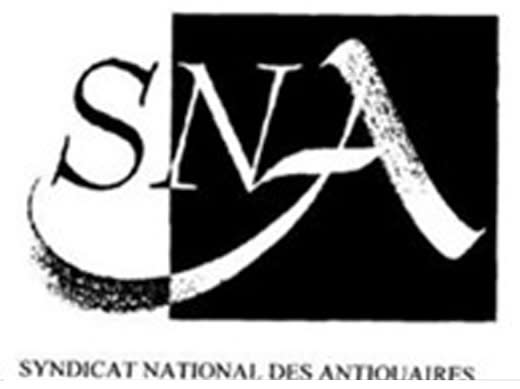Mino Rosso
MATERNITÀ
Gesso
height 65 cm
height 25 5/8 in
height 25 5/8 in
Further images
-
(View a larger image of thumbnail 1
)

-
(View a larger image of thumbnail 2
)

-
(View a larger image of thumbnail 3
)

-
(View a larger image of thumbnail 4
)

-
(View a larger image of thumbnail 5
)

-
(View a larger image of thumbnail 6
)

-
(View a larger image of thumbnail 7
)

-
(View a larger image of thumbnail 8
)

-
(View a larger image of thumbnail 9
)

-
(View a larger image of thumbnail 10
)

Maternità belongs to the creatively happiest moment in Mino Rosso’s short span as a sculptor, between 1926 and 1938. From the late 1930s onwards he devoted himself chiefly to painting...
Maternità belongs to the creatively happiest moment in Mino Rosso’s short span as a sculptor, between 1926 and 1938. From the late 1930s onwards he devoted himself chiefly to painting and only occasionally returned to the medium in which he had produced his most significant output.
In 1930 and 1931 Rosso exhibited several times at important national reviews like the Venice Biennale (1930) and the Rome Quadriennale (1931). He led the Italian futurist movement in sculpture which was virtually born anew in the years following the meteoric explosion of Boccioni – a season brought to a close by the master’s premature death in 1916. Rosso was the only sculptor to sign the Manifesto dell ’aeropittura in 1929, and it was a tribute to him that the term ‘aerosculpture’ began to be used as of the following year.
The 1930 Maternità is not mentioned in the article quoted nor was it exhibited in the course of those years, but it is perhaps the outstanding example of the transition that Fillia describes: Rosso abandons the high stylization of cubist-futurism, which harked back to Oleksandr Archypenko and Jacques Lipchitz, and imbued his creations with “a breath of spirituality”. In 1930 his sculptures explore the theme of Maternità in depth, a number of examples being known in bronze and in wood. The one in gesso presented here is possibly the version in which Rosso struck the most perfect balance between abstract and gurative. It dialogues not only with the two masters cited, but also with Britain’s Henry Moore who was tackling the same topic of Mother and Child in that very year of 1930. In the 1930 Rosso we witness a blend of terse cubist-futurist expressionism and an organic plasticity vibrant with life and closer to the expressive ideas of the great British sculptor. Maternità is the prime example of this, in which the artist abandons topics beloved of early futurism, bound up with exploring movement and dynamism (Swimmer competing, 1930; Man in movement, again dating from 1930), and con- centrates on more intimate values (on which we should remember the 1986 exhibition held in Turin under the title Mino Rosso between futurism and expressionist intimism).
In 1930 and 1931 Rosso exhibited several times at important national reviews like the Venice Biennale (1930) and the Rome Quadriennale (1931). He led the Italian futurist movement in sculpture which was virtually born anew in the years following the meteoric explosion of Boccioni – a season brought to a close by the master’s premature death in 1916. Rosso was the only sculptor to sign the Manifesto dell ’aeropittura in 1929, and it was a tribute to him that the term ‘aerosculpture’ began to be used as of the following year.
The 1930 Maternità is not mentioned in the article quoted nor was it exhibited in the course of those years, but it is perhaps the outstanding example of the transition that Fillia describes: Rosso abandons the high stylization of cubist-futurism, which harked back to Oleksandr Archypenko and Jacques Lipchitz, and imbued his creations with “a breath of spirituality”. In 1930 his sculptures explore the theme of Maternità in depth, a number of examples being known in bronze and in wood. The one in gesso presented here is possibly the version in which Rosso struck the most perfect balance between abstract and gurative. It dialogues not only with the two masters cited, but also with Britain’s Henry Moore who was tackling the same topic of Mother and Child in that very year of 1930. In the 1930 Rosso we witness a blend of terse cubist-futurist expressionism and an organic plasticity vibrant with life and closer to the expressive ideas of the great British sculptor. Maternità is the prime example of this, in which the artist abandons topics beloved of early futurism, bound up with exploring movement and dynamism (Swimmer competing, 1930; Man in movement, again dating from 1930), and con- centrates on more intimate values (on which we should remember the 1986 exhibition held in Turin under the title Mino Rosso between futurism and expressionist intimism).
Literature
S. Alberti, M. Pinottini, Mino Rosso scultore pittore 1904 -1963, Turin, 1993 (Illustration on p.60)
Join our mailing list
* denotes required fields
We will process the personal data you have supplied in accordance with our privacy policy (available on request). You can unsubscribe or change your preferences at any time by clicking the link in our emails.







